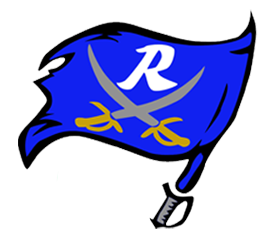Holloway, Charlie - Science

-
Hello and welcome.
My name is Charlie Holloway and I teach 7th grade Life Science. I went to Auburn University and earned my degree in microbiology. I started teaching in 2018 and went back to school to get my teaching certification while I was teaching. Teaching has been a great experience and is very rewarding.
My wife teaches at Rehobeth High School. We have 2 daughters and one has already graduated from Rehobeth. My wife and I both went to Rehobeth and most of our family members are Rehobeth alumni as well. I taught a year at Ashford, and 2 years at Columbia and really enjoyed my co-workers and administrators at those schools, but I am happy to be at the place I call home.
-
7th Grade Life Science Curriculum
The following topics align with the course of study required by the state of Alabama.
The course of study can be found at Alabama Course of Study 7th Grade ScienceUnit 1: Scientific Method
- What is Science? - Students learn about the different scientific disciplines, what constitutes scientific ideas, theory vs law, and that science starts with observations.
- Scientific Method and Experimentation - Students learn about different forms of scientific bias, variables, and errors introduced during experimentation.
- Charts - students learn how to build and read 3 basic chart types - Pie, Bar, and Line.
- Measurements - Students learn how to take measurements in science and the metric system. We practice converting between units and learn how numbers are represented in science.
- Lab Safety - We cover some basics on how to survive in the lab, take a small test, and get a form filled out by the parents.
Unit 2: Molecules to Organisms
- What is life? Students learn how we determine if something is alive.
- Classifying life - Students learn how scientists name and classify organisms.
- Cell Theory - Students learn about several experiments and discoveries that led to the formulation of the cell theory.
- Microscope - Students learn about the discovery of the microscope and the parts of a compound microscope.
- Into the Cell - Students enter the inside of a cell and learn about all the cell parts of a plant, animal, and bacterium.
- Biochemistry - Students learn about the atom, molecules, and bonds involved in creating the main class of compounds responsible for life.
- Sexual vs Asexual reproduction - Students learn a few different ways cells can duplicate.
Unit 3: Anatomy
- Bones, Muscles, and Skin
- Digestion
- Circulation
- Respiration and Excretion
- Disease
- Nervous
- Endocrine and Reproductive
Unit 4: Genetics
- Genetics and Society - Students take a closer look at the ethics in genetic discovery
- DNA - Students dig a little further into DNA and learn the CENTRAL DOGMA of Biology
- Transcription and Translation - how proteins are made and students decode some genes and perform some BLAST searches
- Mutations - Students learn the different types of mutations and how they occur
- Mendelian Genetics - students learn the basics of monohybrid crosses
- Genetic technologies - Students learn how what they are learning is being used in business.
Unit 5: Evolution
- Do organisms change over time? Students learn why evolution is a thing.
- Theory - students learn what scientist mean by theory.
- Charles Darwin - Students learn the history of evolution
- Natural selection - Students learn some driving factors of selection including overpopulation, competition, and environmental factors.
- Evidence for Evolution - Students look at fossil, anatomical, embryological, and DNA evidence
- Radiometric dating - Students learn the basis of carbon and other forms of dating used to create the geological timescale.
- Common descent
Unit 6: Ecology
- Students learn how organisms interact with each other and their environment
- Food chains and food webs and biogeochemical cycles - Students learn how nature creates balance with the flow of matter and energy.
- Biodiversity and the importance of ecology - Students learn why we learn ecology
- Habitats - Students learn the difference between biotic and abiotic factors
- Population Ecology - Students learn how ecology is organized and what populations are.
- Limiting factors - Students learn about disruptions in ecosystems such as the cane toad.
- Symbiosis - Students learn different types of close relationships between organisms that exist in nature.
- Predator and Prey relationships - Students learn how predators and preys interact and a little about camouflage.
- Behavior patterns - Students learn how animals learn behavior
- Biomes - Students learn about the different environments that exist on earth.


